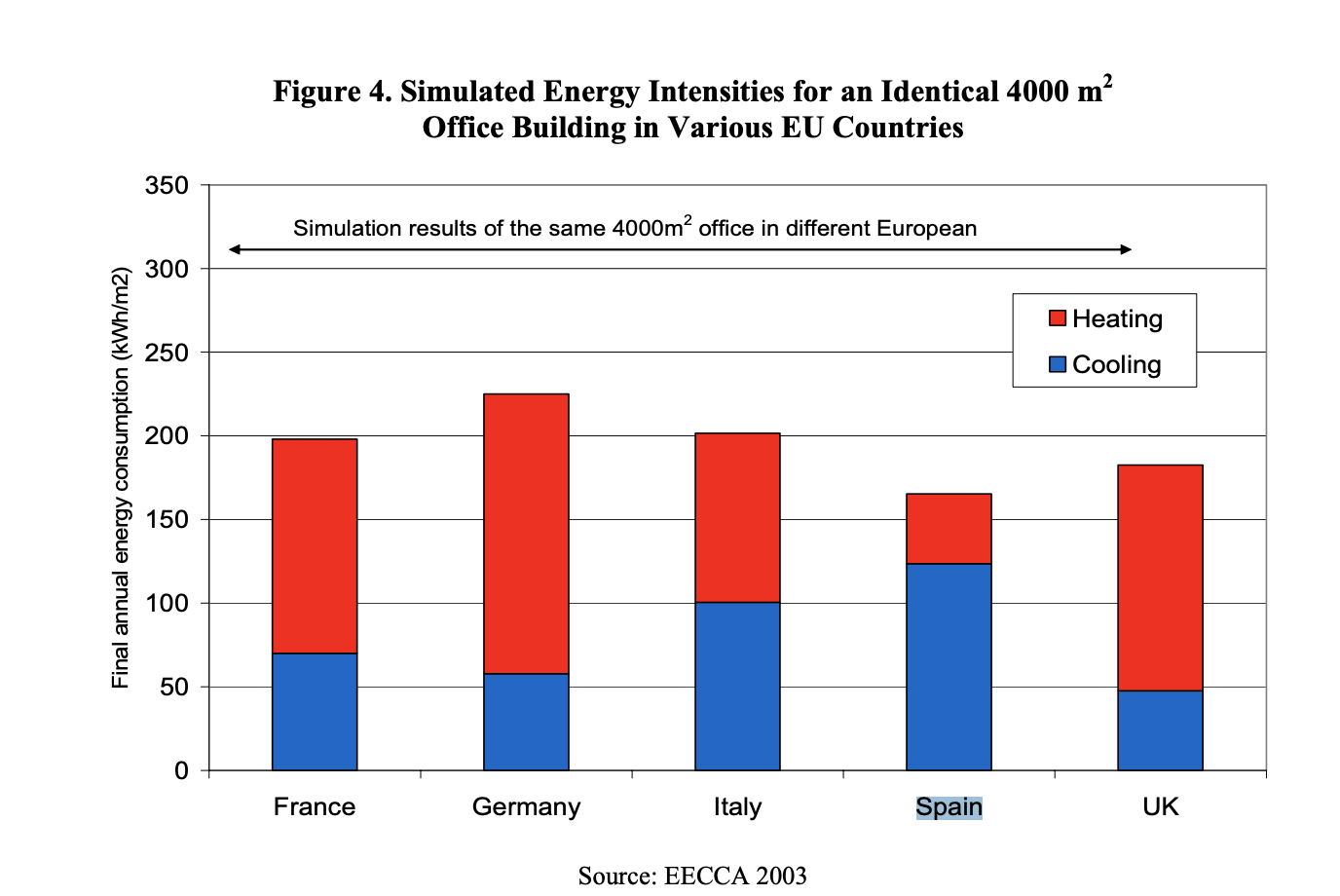Energy efficiency is like a long-distance race. The first kilometres are easy and if you train a little bit you will achieve big results. But once you beat your records, there’s a moment when you need a deeper analysis to understand where your areas of improvement are. You need to understand what is going on in your industry. Keep reading if you have ever wondered… “how could I know the standard energy consumption in my industry?”.
In any distance run, it’s easier if you have a friend by your side. Running alone is great, of course, but as in energy efficiency, you can be a better runner just by comparing to runners who are similar to you.
Comparing similar buildings in the same industry or the weather area where your building is based can help you discover how they are consuming in comparison to each other. And comparing them to other company’s buildings will help you get a better idea of how competitive you are when it comes to energy consumption.
Even though this kind of in-depth analysis will benefit your buildings and your efficiency plan, it’s not always so easy to perform.
For example, it is difficult to find industry indicators for the manufacturing or the services industry. Sometimes, governments from different countries or consultancies launch these kinds of surveys, but the information isn’t always accurate. As a result, you may not be able to cover all the industries that interest you.
But there are some good sources of information out there, and in this article, we will review them for you.
Industry-Focused Energy Consumption Studies
There are a few comparative surveys related to energy efficiency. Normally researchers choose a few buildings among some industries to perform normalisations and get results by using indicators useful to the rest of the industry.
“Comparing Commercial Building Energy Use Around the World” is one of the most interesting publications in this field. Led by the International Energy Agency it focuses on analysing office buildings. Although it is slightly out of date, it is still an interesting report for those with interest. You can see that there are international benchmarks for North America, Europe, China, other Asian countries and Russia. It’s really interesting that you can find details for the European countries, with segmented information for France, Germany, Italy, and Spain. A brief and more up-to-date version can be found here.
For example, we can highlight the segmented information on final energy consumption for heating and cooling in offices of 4,000 m², comparing countries such as France, Germany, Italy and Spain.
If you translate this information to the sector level, you will be able to detect which sectors have the greatest savings potential, as in this case in heating and cooling.
On the other hand, if we analyse more recent comparative energy consumption studies, such as the IEA 2020 report on energy efficiency in buildings, we can see how the COVID-19 crisis brings new challenges in the efficient management of energy consumption for certain sectors.
For example, according to this report, the new trend towards remote working in many sectors means that the energy demand of office or commercial buildings is affected. Therefore, energy efficiency is being reduced in many of these buildings, as their actual energy consumption in many cases does not correspond to the actual energy demand.
As an expert in energy management, on the one hand, this type of study can help you to follow the evolution of energy demand and consumption in other sectors, detecting business opportunities if you are an energy services company.
On the other hand, you will be able to evaluate your energy efficiency plan by comparing it with others in your own sector, detecting if your plan can still be improved further or if you are already an example to follow in this respect.
Public Energy Consumption Databases
Public database results are another alternative. A good source available worldwide is from the International Energy Agency (IEA) which focuses on Energy Efficiency Indicators.
There you will find data related to energy intensity by country (kWh divided by GDP). This could seem like a strange indicator for those of you working with kWh/m², but it could be a good reference to compare your own results. Even if your building is a factory or if you work in the services industry, this database can be useful for comparison.
With that said, it’s important to know that you won’t find data for a specific industry here, you can only compare to a generic industry aggregation.
Another option is the ODYSEE-MURE database, which is financed with European funds, and it aggregates industry information for each one of the European countries, allowing comparatives among them. It merges the information from key European databases Odysee and Mure to provide further insights on energy consumption across the continent.
Depending on the industry you’re interested in, the data quality changes. Unfortunately, some of the industries have a lack of data, but it is still helpful for an overview. A good advantage of this database is that it offers adjustments related to the weather, the energy production mix, or both of them.
If you work in the US, you are lucky to have a country-wide study undertaken by the US Energy Information Administration. The Commercial Buildings Energy Consumption Survey (CBECS) is released every 4 years and gathers data from over 200,000 commercial buildings including not only offices but also schools, shops, healthcare facilities, etc. The only sectors it doesn’t cover at the moment are residential, industrial and agricultural, but the sample is still large enough to analyse and observe trends and average use. The last version available is 2018.
Using the CBECS data as a base, Energy Star also provides a benchmarking tool to dive down into the details. Buildings can be rated and certified through it. Whether you have assets in the US or you’re just interested in learning more, we recommend you have a look at it.
To sum up, despite the growing need to compare yourself against buildings similar to yours, it’s not always that easy to perform this analysis. But don’t worry, we have listened…
Can you imagine a tool that helps you to bring some light into the complex process of comparing and detecting potential energy savings?
Well, Spacewell Energy (Dexma) has it!
It is Spacewell Energy Detect, a tool that is helping companies compare the electricity costs of their buildings with similar buildings in their sector.
How does it work? Take a look at this webinar and find out how it works inside:
Editor’s Note: Re-edition of an original article written by María Fernández (ex-contributor to Spacewell Energy (Dexma) energy efficiency blog).





